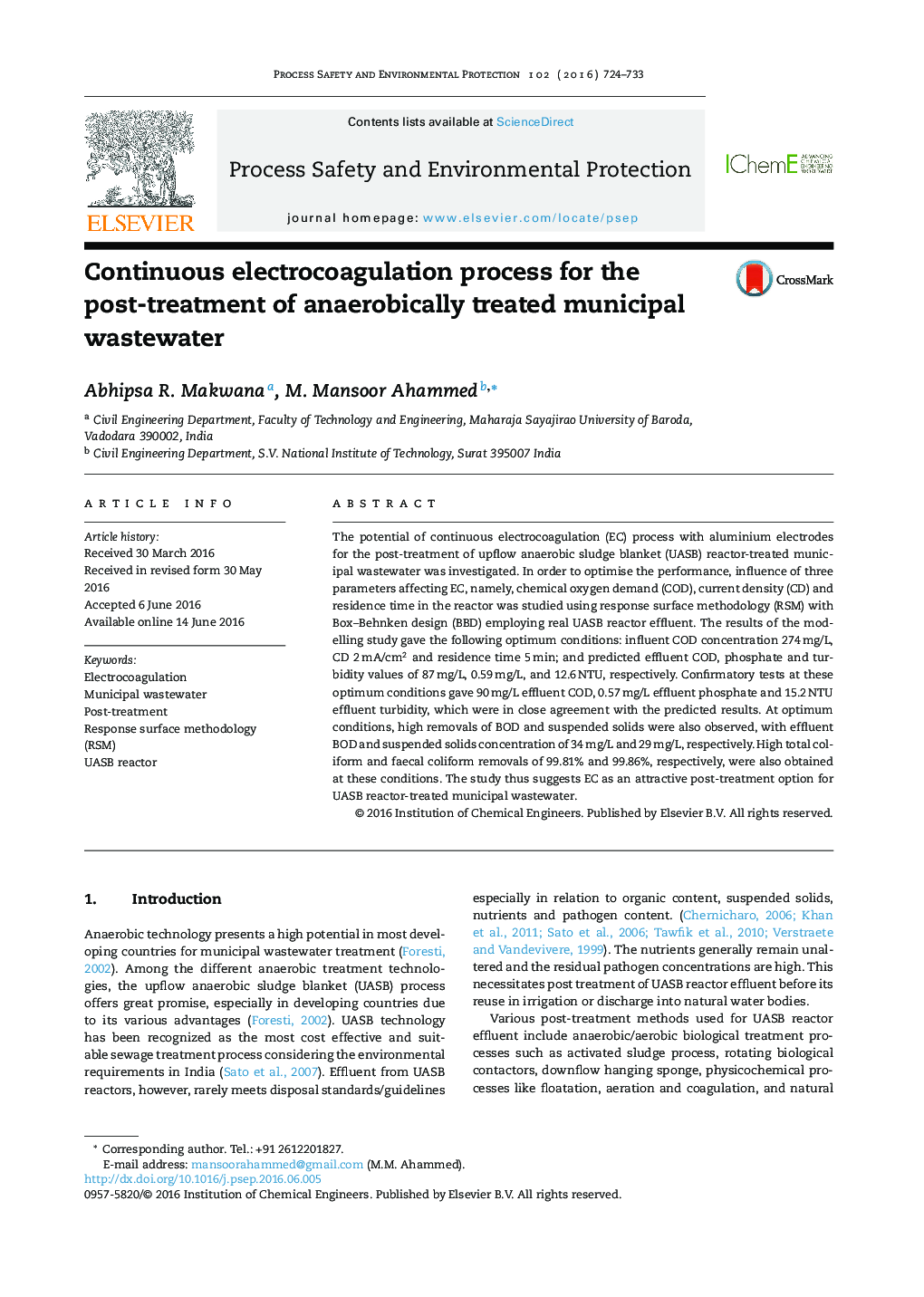| Article ID | Journal | Published Year | Pages | File Type |
|---|---|---|---|---|
| 588124 | Process Safety and Environmental Protection | 2016 | 10 Pages |
•Electrocoagulation for post-treatment of UASB reactor-treated municipal wastewater.•Response surface methodology (RSM) is used to optimise three process parameters.•Initial COD, current density and residence time are the parameters studied.•Indian disposal standards for COD, BOD, pH and suspended solids achieved.
The potential of continuous electrocoagulation (EC) process with aluminium electrodes for the post-treatment of upflow anaerobic sludge blanket (UASB) reactor-treated municipal wastewater was investigated. In order to optimise the performance, influence of three parameters affecting EC, namely, chemical oxygen demand (COD), current density (CD) and residence time in the reactor was studied using response surface methodology (RSM) with Box–Behnken design (BBD) employing real UASB reactor effluent. The results of the modelling study gave the following optimum conditions: influent COD concentration 274 mg/L, CD 2 mA/cm2 and residence time 5 min; and predicted effluent COD, phosphate and turbidity values of 87 mg/L, 0.59 mg/L, and 12.6 NTU, respectively. Confirmatory tests at these optimum conditions gave 90 mg/L effluent COD, 0.57 mg/L effluent phosphate and 15.2 NTU effluent turbidity, which were in close agreement with the predicted results. At optimum conditions, high removals of BOD and suspended solids were also observed, with effluent BOD and suspended solids concentration of 34 mg/L and 29 mg/L, respectively. High total coliform and faecal coliform removals of 99.81% and 99.86%, respectively, were also obtained at these conditions. The study thus suggests EC as an attractive post-treatment option for UASB reactor-treated municipal wastewater.
